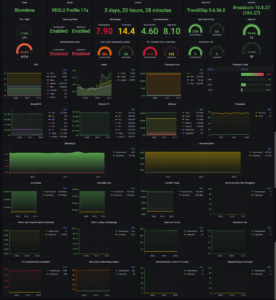Are you ready to take your blogging game to the next level? If you’re looking for a way to boost your blog’s visibility, reach more readers, and ultimately achieve greater success, mastering Google SEO is essential. In a fast-paced digital world where millions of blogs compete for attention every day, understanding how to optimize your content for search engines can be the key that unlocks new opportunities.
Imagine having your blog appear on the first page of Google search results. Envision attracting not just traffic but engaged visitors eager to read what you have to say. That dream isn’t far-fetched; it’s entirely achievable with the right approach towards creating a successful Google SEO blog. So let’s dive into everything from keyword research and website optimization to building backlinks and leveraging social media—all vital components in enhancing your online presence!
Understanding Google SEO
Google SEO, or Search Engine Optimization, is the process of enhancing your blog’s visibility on Google search results. It involves various strategies and techniques designed to improve your site’s ranking.
At its core, Google SEO focuses on understanding how search engines work. This means knowing what users are searching for and ensuring that your content meets those needs.
Search algorithms consider numerous factors such as keywords, website structure, and user experience. By optimizing these elements, you can help Google identify the relevance of your content.
Staying updated with Google’s frequent algorithm changes is crucial too. These updates can significantly impact rankings overnight. So being proactive in learning about best practices can give you an edge over competitors.
Mastering Google SEO creates a pathway for more organic traffic and establishes credibility within your niche.
Why Google SEO is important for your blog
Google SEO is a game-changer for bloggers. It directly impacts your visibility on search engines, which means more potential readers can discover your content.
Without proper SEO, your blog might get lost in the vast ocean of online information. That’s not where you want to be if you’re aiming for engagement and growth.
When you optimize for Google, you enhance user experience too. Fast-loading pages and mobile-friendly designs keep visitors happy and encourage them to stay longer.
Higher rankings lead to increased credibility as users tend to trust top results more than those buried further down. This trust translates into consistent traffic over time.
Google SEO helps build your brand. With solid optimization strategies, you position yourself as an authority in your niche—drawing in loyal followers eager for what you have to say next.
Steps to create a successful Google SEO blog:
Creating a successful Google SEO blog starts with thorough keyword research. Identify relevant keywords that your target audience is searching for. Tools like Google Keyword Planner can help you discover popular search terms.
Next, focus on optimizing your website’s structure and content. Ensure your site is user-friendly and fast-loading. Use headers, bullet points, and images to break up text. This makes it easier for readers to engage with your content.
Building backlinks is crucial too. Reach out to other bloggers or websites in your niche for guest posting opportunities or collaborations. Quality backlinks boost your site’s authority.
Don’t underestimate the power of social media either. Share your posts across various platforms to drive traffic back to your blog. Engage with followers by responding to comments and sharing insights related to SEO topics they care about.
Each step plays a vital role in establishing a solid foundation for any Google SEO blog.
A. Keyword research
Keyword research is the cornerstone of any successful Google SEO blog. It involves identifying words and phrases that your target audience is searching for online. Understanding these terms can help you tailor your content to meet their needs.
Start by using tools like Google Keyword Planner or Ubersuggest. These platforms provide insights into search volume, competition level, and related keywords. Look for long-tail keywords; they often have less competition and higher conversion rates.
Once you’ve gathered a list, analyze user intent behind each keyword. Are people looking for information, solutions, or products? Aligning your content with this intent will improve engagement.
Remember that trends change over time. Regularly revisit and update your keyword strategy to stay relevant in a dynamic digital landscape. This ongoing process keeps your blog fresh and aligned with what readers actually want to know.
B. Optimizing your website’s structure and content
Optimizing your website’s structure and content is essential for a successful Google SEO blog. Start by ensuring that your site has a logical hierarchy. This means clear navigation and well-organized categories. A clean layout helps both users and search engines understand the flow of information.
Next, focus on creating high-quality content that’s relevant to your target audience. Use headings and subheadings effectively to break up text and make it scannable. Incorporate keywords naturally within this content but avoid keyword stuffing; it can lead to penalties.
Don’t forget about meta tags, either. Craft compelling title tags and descriptive meta descriptions that encourage clicks from search results. These elements are vital in informing users about what they’ll find on your page.
Optimize images with appropriate alt texts. This improves accessibility while also providing additional context for search engines to index properly.
C. Building backlinks
Building backlinks is a crucial aspect of creating a successful Google SEO blog. Backlinks act as votes of confidence from other websites, signaling to search engines that your content is valuable and credible.
Start by identifying authoritative sites in your niche. Reach out to them with genuine collaboration ideas or guest post opportunities. When you provide quality content for their audience, you can earn a backlink to your blog.
Another effective strategy involves sharing your expertise on forums or industry-related groups. Engaging with communities can lead to organic backlinks when members find value in what you offer.
Don’t overlook the power of social media platforms either. Sharing posts can not only drive traffic but also inspire others to link back to your blog naturally.
Keep an eye on competitors’ backlink profiles using tools like Ahrefs or Moz. Understanding where they gain links can uncover new opportunities for you as well.
D. Utilizing social media
Social media is a powerful tool for promoting your Google SEO blog. It enhances visibility and drives traffic to your content.
Start by sharing your posts on popular platforms like Facebook, Twitter, and Instagram. Tailor your message according to the audience of each platform for maximum engagement. Use eye-catching visuals or snippets from your blog to entice readers.
Engage with followers regularly. Responding to comments can build community and encourage shares, which amplifies reach. Consider joining relevant groups or forums where you can share insights from your blog.
Don’t forget about hashtags! They increase discoverability and connect you with users interested in similar topics. Building a social presence also helps establish authority within your niche.
Collaborating with influencers can further boost exposure. Their endorsement may introduce new readers who are eager for quality content linked back to your site.
Common mistakes to avoid in Google SEO blogging
One common mistake in Google SEO blogging is neglecting keyword research. Choosing the wrong keywords means you’re targeting an audience that isn’t looking for your content. Always invest time to find relevant, high-traffic keywords.
Another pitfall is ignoring on-page optimization. Failing to use headers, meta descriptions, and alt texts can sabotage your chances of ranking higher in search results. These elements are essential for both readability and SEO.
Overstuffing keywords is also a major error. It may seem tempting to include as many keywords as possible, but this practice can lead to penalties from Google.
Don’t overlook mobile optimization. With more users accessing blogs via smartphones, ensuring your site is mobile-friendly isn’t just a nice-to-have; it’s necessary for good rankings and user experience.
Measuring and tracking success
Measuring and tracking success is crucial for any Google SEO blog. Without clear metrics, it’s hard to know what’s working.
Start by setting specific goals. Decide whether you want more traffic, higher rankings, or increased engagement. Each goal requires a different focus.
Use tools like Google Analytics to monitor your website’s performance. This platform offers insights into visitor behavior and demographics. You can see which posts attract the most readers.
Look at keyword rankings as well. Tools such as SEMrush or Ahrefs can help track how well your targeted keywords are performing over time.
Don’t forget about user engagement metrics too! Track bounce rates and average session duration to understand how visitors interact with your content.
Regularly review these analytics to adjust your strategies accordingly. Continuous improvement is key in the ever-changing landscape of SEO.
Tips for staying up-to-date with Google’s algorithm changes
Staying current with Google’s algorithm changes is crucial for maintaining your blog’s visibility. One effective strategy is to follow industry leaders on social media and subscribe to relevant newsletters. This way, you can receive timely updates directly in your inbox.
Participating in online forums or communities focused on SEO can also provide valuable insights. Engaging with other bloggers allows you to share experiences and strategies.
Regularly check Google’s official blog for announcements about new algorithms or updates. They often provide detailed explanations of what these changes mean for website owners.
Consider attending webinars or conferences focused on SEO trends. These events offer opportunities to learn from experts and network with peers who share similar goals. Keeping a finger on the pulse of digital marketing will help keep your google seo blog thriving amidst constant change.
Conclusion
Creating a successful Google SEO blog is not just about writing; it’s an intricate process that requires strategy, planning, and ongoing effort. By understanding the fundamentals of Google SEO and its significance for your blog’s visibility, you’re already ahead of the game.
The steps outlined—from keyword research to optimizing your content structure—are essential in crafting posts that rank well on search engines. Building backlinks establishes authority while leveraging social media expands your reach. However, avoid common pitfalls like keyword stuffing or neglecting mobile optimization to ensure you’re on the right track.
Measuring success through analytics will guide your adjustments and improvements over time. Staying current with Google’s algorithm changes keeps you competitive in this ever-evolving landscape.
With dedication and informed strategies in place, you’ll be able to create a thriving Google SEO blog that attracts readers and drives engagement effectively. Embrace the journey, refine your approach continuously, and watch as your blog flourishes in both quality and traffic.




